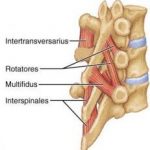New objective findings after whiplash injuries: High blood flow in painful cervical soft tissue: An ultrasound pilot study
New objective findings after whiplash injuries: High blood flow in painful cervical soft tissue: An ultrasound pilot study

By Matthew J. DeGaetano, DC and Dr. Raymond Tolmos, DC, DABCI
Certified in Personal Injury
New objective findings after whiplash injuries: High blood flow in painful cervical soft tissue: An ultrasound pilot study
Neck sprains and strains, commonly known as whiplash, are the most frequently reported injuries in U.S. insurance claims.
Highlights
• Painful neck regions in patients with whiplash-associated disorder were studied.
• Grey scale ultrasound and color Doppler were used to confirm high blood flow.
• Whiplash patients had higher blood flow compared with the control subjects.
• High blood flow was found in painful regions of the neck in whiplash patients.
The presence of high blood flow in the structurally abnormal and painful regions of tendinosis, but not in the normal pain-free tendons, was recently confirmed by color Doppler (CD) ultrasound (US).

Biopsies from the regions with high blood flow demonstrated the presence of sympathetic and sensitive nerve fibers juxtapositioned to neovessels. Grey-scale US and CD are reliable methods used to evaluate structural homogeneity, thickness, and blood flow in the peripheral tendons. The aim of this study was to utilize CD to qualitatively evaluate for the presence of abnormal high blood flow in paravertebral tissues after whiplash injuries in patients with chronic neck pain.
Twenty patients with chronic neck pain after whiplash-associated disorder (WAD) and 20 pain-free control subjects were included in the study. The same experienced radiologist performed all grey-scale US and CD examinations.
More regions with high blood flow were observed in the patient group than in the control group. At all levels, the high blood flow pattern was detected at the enthesis of the spinous processes and bilaterally juxtapositioned to the facet joints.
All regions identified by the patients as painful and tender corresponded to the positive high blood flow found during the CD examination.
Implications
These findings document increased blood-flow/neovascularization at insertions of neck muscles which may indicate that there are pathological neovascularization with accompanying pain- and sympathetic nerves, similar to what has been found in Achilles-tendinosis. These findings promise that similar treatments that now is successful with Achilles tendinosis, may be effective in the WAD-painful muscle insertions of the neck.
References:
1. Scandinavian Journal of Pain Volume 4, Issue 4, October 2013, Pages 173-179







